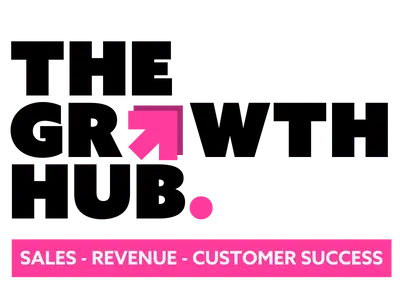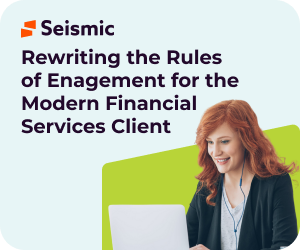Content marketing is a buzzword that often comes up in B2B organizations, but what is content marketing, really?
We’re so glad you asked! Content marketing is a resource for customers that uses different assets to address business challenges and help buyers make a purchasing decision. It helps businesses reach, engage, and convert customers by addressing their business challenges and needs. The overall goal behind content marketing is to create a marketing strategy that reaches and converts your ideal customers.
What is a content marketing strategy?
At its core, a content marketing strategy is your “why, who, and how.” Why you are creating content, who you are helping, and how you will help them in a way no one else can. Organizations typically use content marketing to build an audience and achieve at least one of these profitable results: higher lead quality, faster conversions, and increased revenue. And to achieve these goals, a thoughtful marketing strategy is critical.
You’ve probably heard the phrase, “content is king,” and with a thoughtful marketing strategy, it can also be an integral tool that helps you get the attention of your audience. We’ve identified 10 core building blocks that will help develop your organization’s content marketing strategy or take it to the next level. These building blocks are pivotal for a successful marketing strategy. Check them out below!
1. Brand guidelines
The foundation of your marketing strategy comes from your brand identity which should include clear guidance on personality, voice, and tone. Successfully communicating your brand identity through your content is critical if you want content marketing to work. Developing and putting to use your unique brand book will help create a consistent voice and tone across the different assets and channels your organization uses. Your brand guidelines are a crucial part of your marketing strategy.
If you need some inspiration, here are brand book examples from Mailchimp, Nike Football, Intel, and Cisco.
2. Marketing objectives
Understanding your audience helps align your content marketing strategy to the addressable needs of your market. A customer persona is a fictional character that is developed based upon different attributes for a role or segment. This is a vital part of your marketing strategy. These can include demographics like:
- Specific: State exactly what you want to accomplish.
- Measurable: Determine the metrics for success.
- Achievable: Go for challenging but attainable results.
- Relevant: Make sure the goals support your marketing strategy.
- Time-bound: Outline the period in which you’ll work on achieving the goal.
3. Customer persona(s)
Understanding your audience helps align your content strategy to the addressable needs of your market. A customer persona is a fictional character that is developed based upon different attributes for a role or segment. These can include demographics like:
- Role and responsibilities
- Challenges and pain points
- Influence on the purchase decision
- Goals and objectives
- Solution requirements
Most importantly, work to uncover a unique insight about your target customer that the rest of the industry overlooks or under-appreciates. Often, it will serve as the creative catalyst for a successful content strategy or campaign direction.
4. Data and market research
Data and research help your organization understand the current conditions of the market, as well as where it’s going. This forms a crucial part of your marketing strategy. The content that your organization shares with its audience generates data and insights that can help your team fine-tune its content strategy.
Market research provides insights into what other brands have done to improve their marketing strategy. Learning about the market includes learning about your competitors, as well. If you know what content your competitors share with their customers and prospects, you can use that to your advantage. Tools like social listening can help your organization understand how prospects and buyers discuss your product and industry online. These valuable insights can help your organization improve its content and gain an edge in your marketing strategy.
5. Customer journey map
Once you’ve defined who your customer is, a journey map outlines your persona’s needs and how you can meet them at every stage of the buyer’s journey. An effective map is a visual representation of the customer journey based on what the buyer is thinking and feeling at every stage of the decision-making journey. This is another key aspect of your marketing strategy. By understanding what a buyer is thinking and feeling, you can create content that best supports them as they consider your product or service.
Customer journeys are not linear, but there are several ways your organization can be agile and adapt to changes. Savvy marketing leaders use a variety of methods to represent the journey, from post-it notes on a boardroom wall to Excel spreadsheets to infographics. The most important thing is that the map makes sense to those who use it.
It helps if your journey map is tailored to your specific customer profile (and how you reach and interact with them), but a few guiding principles and good design approaches apply. Here is what is typically included in a customer journey map:
- Buying process
- User actions
- Emotions
- Pain points
- Solutions
6. Content-market fit
At times, the content a company creates doesn’t always satisfy the customers it’s trying to attract, either because the content doesn’t reach them, doesn’t fit their needs, or both. For example:
Findability issues: content is published without first considering how potential and existing customers might find it ? time and effort are wasted on content that nobody sees.
Relevance issues: content is published without making sure it is what potential and existing customers are interested in/need ? time and effort are wasted on content aimed at the wrong audience.
As important as it is to understand your customer, it’s also important to understand the current state of content in your industry to look for opportunities. Be sure to also pay attention to the state of media behaviour and content consumption formats, including device usage and visual trends. The key is to find your unique place to stand out and add value to the conversation. Simply put, the goal of a content-market fit is distributing content to attract and retain customers. This aspect plays a crucial role in your marketing strategy.
7. Process
Every effective content program requires an iterative process that helps your team focus on what’s important: translating creativity into effective content. To build an efficient content marketing machine, consider the following:
Group content into a few core buckets (eg, videos, blogs, ebooks, microsites)
Design a ‘best practices’ workflow for each core content type. Think about where each content type begins, who owns the business requirements and brief development process, when/where resources need to be turned on or off, how feedback and approvals are coordinated, how to measure each step, and who’s responsible for the final output.
Meet with stakeholders and members of your team to see whether your ‘best case’ process is possible and makes sense for them. Identify what might be missing or that you haven’t thought of?
Test the process. Does it work? Where are the gaps? Where are the breaking points? Processes will mature and develop over time. Stay cognizant of production time and resource requirements. Regularly check in with teams about any frustrations.
Incorporate habits. Making your new workflows a habit is what will allow you to truly scale your content strategy. Enforce your new workflows internally and find champions at each checkpoint to help you.
You may also want to diagram your process, along with key challenges and opportunities for improvement, with a “swim lane” diagram. This process understanding is a significant part of your marketing strategy.
8. Internal communications plan
An internal communications strategy can be a recipe for success, but without a detailed plan to execute that strategy, there may be a breakdown in your process. Your content team can bring in diverse voices — your head of communications, customer marketing, product marketing, and senior marketing management — to ensure they’re aligned with your strategy. This is particularly useful if your content team is operating as a ‘service’ function for other parts of the organization.
9. Content calendar
Consistency is essential when building a digital presence, and a great way to have everyone in the loop is to manage a joint content calendar. This tool will help you plan and stick to a consistent schedule of publishing content. It can include information about the content format, time of posting, channels, and so on.
By scheduling content on a shared calendar, you can enable proper visibility and coordination across different initiatives, teams, and regions.
10. Ongoing analysis
It’s often said “a writer’s work is never done,” and the same is true when you’re responsible for defining a brand’s ongoing narrative. In general, “test and learn” is a sound operating philosophy, and it’s particularly true with content. Place small bets, iterate, gather data, listen for feedback, and then scale your successes. Building great content effectiveness requires patience and perseverance, so it’s important to progress incrementally, milestone by milestone, and break down your ideal outcomes into actionable programs and phases.
Create impactful content and campaigns with Seismic
Wondering how to create a content marketing strategy that is a custom fit for your company? At Seismic, we are committed to helping organizations and teams templatize workflows and task management that accelerate the delivery of high-impact campaigns. Our “work smarter” mentality will help you decrease the time it takes to create content and launch campaigns with robust workflows and proofing that ensure compliance and speed. Learn more here.





